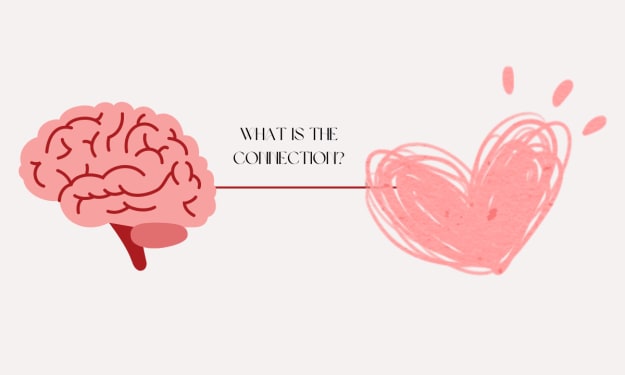Biochemical
twenty two essentials for all that is living

Our environment has a self-sustaining ecosystem, generating bacterias as nutrients for cellular functions. Most notable being nitrogen in the soil. This nutrient is either used or short-lived. As nitrogen escapes the soil. When used for plant growth it is a vital role in cellular function responsible for making its own food. This innervates the function of a pigmented cell known as chlorophyll. Absorbing light as energy to convert to sugar and starch. You might even find a plant when it silicates. Plants acquire carbon dioxide from its environment in combination with hydrogen from water, using light as energy to convert that to sugar. Another trace element in plants is miniscule amounts of metals. The probability that this metal nutrient, copper and iron, has bonded to a nitrogen molecule. Water being the main transport for nutrients through the vascular system. Given the pH conditions are adequate for this to inhibit nutrient absorption. As a plant metabolizes it also gives off by product most commonly known as oxygen. As potassium helps draw in water for the stomata to swell, open and release. A plant’s metabolism is said to help it adapt to abiotic and biotic factors in the environment. Some plants are able to produce defense mechanisms such as toxins and thorns to ensure full development of the plant. Some resulting in food production for seasonal consumption by others in the kingdom. Magnesium is essential for many biochemical functions in the plant. Without it the soil pH falls to an acidic state. The cystolith is what innervates the biochemical bonds of the gains and losses in hydrogen and carbon chains, producing different combinations of hydrogens and carbons. This is a repeated chemical response in plants during the growing season until dormancy at deciduous parts of the earth. The plant no longer uses chloroplast to synthesize proteins. There are twenty two common essential amino acids that are present in all that is living.
Reading from The Mood Cure by Julia Ross
The Importance of Amino Acids in mammals
"by LM Barge · 2019 · Cited by 152 — Redox and pH gradients significantly impact reaction pathways: Amino acids only form when the mineral contains both oxidized and reduced iron, and when the surrounding solution is alkaline."
The definition of anion gap is the measure of the difference between the negatively charged and positively charged electrolytes in your blood. If the anion gap is too high, your blood is more acidic than normal. If the anion gap is too low, your blood isn't acidic enough.
Also looking at lipids oxidized by sodium Na
Carbon C and Hydrogen H chains
and Nitrogen N
as the main types of structural bonding
Substances such as hydrogen or carbon that cannot be broken down or converted into other substances, by chemical means. By the chemical bonds that hold atoms together in molecules are formed hydrogen and carbon chains. Generally share electrons and achieve a filled outer shell of eight electrons by forming several covalent bonds. The number of electrons that an atom must acquire or lose (either by sharing or by transfer) to attain a filled outer shell is known as its valence. One factor that would help is a low oxidation state. An electron-rich metal atom would readily donate electron density into nitrogen's. Nitric oxide can both promote and inhibit lipid peroxidation. Under stressed conditions, biological molecules are exposed to pro-oxidant species resulting in irreversible oxidation reactions. Such reactions result in chemical modification of biological molecules that can lead to cellular dysfunction. Oxidative damage to nuclear DNA can result in gene mutation. Higher concentrations of cholesterol, by filling in gaps between phospholipid tails, decreases permeability even for small molecules that can normally pass through the membrane easily. The organic solvents dissolve lipids from cell membranes making them permeable to antibodies. There are three amino acids that have basic side chains at neutral pH. These are arginine (Arg), lysine (Lys), and histidine (His). Their side chains contain nitrogen and resemble ammonia, which is a base. The effect of transition metal ions is autocatalytic. A chemical reaction is said to be autocatalytic if one of the reaction products is also a catalyst for the same reaction.
Amino acids are organic compounds that contain both amino and carboxylic acid functional groups. Although over 500 amino acids exist in nature, by far the most important are the 22 α-amino acids incorporated into proteins. Only these 22 appear in the genetic code of all life.
There are numerous roles for protein synthesized functions in the body. Each protein has its own sequence of amino acids. The sequence of the protein bonds in a few different types of structures. They have different functions in your body. A polypeptide chain consists of amino acids bonded together by peptide bonds. The word poly means many, and the word peptide refers to proteins. So, a polypeptide chain is a chain of the building blocks of amino acid proteins.
The distinct integrated roles of amino acids for proper neurotransmission. Further more than their role in protein synthesis, many of the proteinogenic amino acids possess neuromodulatory effects while others act as essential proceedings of metabolic pathways to neurotransmitters in synapses. Without, deficiencies in neurotransmission will result. The release is regulated by key converts of energy from one form to another of membrane potential changes with calcium channels.
Neurotransmission between neurons. Signals are passed from one neuron to the next at junctions called synapses. Occurs over the span of a few milliseconds. A controlled release of small molecular neurotransmitters. Multitudes are amino acids.
Neurons communicate to each other by the release of chemicals stored in synaptic vesicles across specialized gaps known as synapses. These chemicals diffuse across the synapse and bind to their target receptors on adjacent neurons to modulate their physiological states. While these messenger chemicals are collectively referred to as neurotransmitters, there can be confusion regarding the difference between neurotransmitters and neuromodulators. Classically, neurotransmitters are defined as molecules that meet the following criteria (adapted from Werman):
Presence of the molecule in neurons,
Stored in synaptic vesicles and released in a Ca2+-dependent manner from neurons as a result of depolarization,
Exogenous application of the molecule must elicit the same response from postsynaptic neurons as endogenously-released molecules due to binding to specific receptors, and
The molecule must have a mechanism for its removal from the synapse
As a class of compounds, amino acids are most commonly recognized as the building blocks of proteins. However, strictly speaking, amino acids are defined as compounds that contain an amine group (-NH3+) and a carboxylic acid group (-COO−) (represented here in their physiologically most relevant ionization states), and not all amino acids are proteinogenic. In addition to serving as protein building blocks, amino acids, for example, function throughout the body as key metabolites, precursors to other metabolites and lipids, and regulators of gene expression and cell signaling. Within physiological systems, amino acids may also have specialized roles. In the nervous system alone, several amino acids.
About the Creator
Enjoyed the story? Support the Creator.
Subscribe for free to receive all their stories in your feed. You could also pledge your support or give them a one-off tip, letting them know you appreciate their work.






Comments
There are no comments for this story
Be the first to respond and start the conversation.